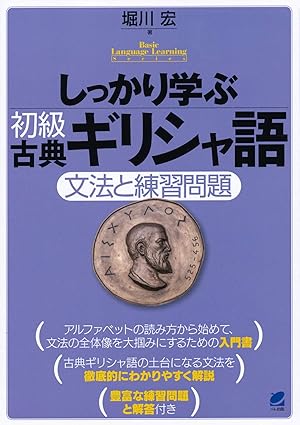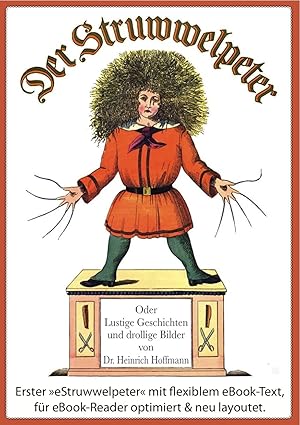



Have you ever noticed that some English words sound exactly like what they mean? That’s the magic of onomatopoeia — words that are created from sounds. In Japanese, there are many such expressions like wan-wan (the sound of a dog barking) or zāzā (the sound of heavy rain). English also has plenty of sound-based words — especially verbs that come directly from these sounds.
Before we look at the examples, here’s a short and fun video that explains how native speakers use sound words in daily life:
| Animal | Sound (Onomatopoeia) | Verb | Example Sentence |
|---|---|---|---|
| 🐶 Dog | bow-wow/woof | bark | The dog barked loudly. |
| 🐱 Cat | meow | meow | The cat meowed for food. |
| 🐮 Cow | moo | moo | The cow mooed in the field. |
| 🐑 Sheep | baa/baa-baa | bleat | The sheep bleated softly. |
| 🐐 Goat | baa/maa | bleat | The goat bleated near the barn. |
| 🐔 Hen / Chicken | cluck/cluck-cluck | cluck | The hen clucked after laying an egg. |
| 🐓 Rooster | cock-a-doodle-doo | crow | The rooster crowed at sunrise. |
| 🐴 Horse | neigh | neigh / whinny | The horse neighed when it saw its friend. |
| 🐖 Pig | oink | oink | The pigs oinked happily in the mud. |
| 🐦 Bird | tweet/chirp | tweet/chirp | The birds chirped in the trees. |
| 🐍 Snake | hiss | hiss | The snake hissed angrily. |
| 🐸 Frog | ribbit/croak | croak | The frog croaked near the pond. |
| 🦆 Duck | quack | quack | The duck quacked at the visitors. |
| 🐝 Bee | buzz | buzz | The bees buzzed around the flowers. |
| 🐘 Elephant | trumpet | trumpet | The elephant trumpeted loudly. |
| 🐺 Wolf | howl | howl | The wolves howled at the moon. |
Many of these verbs come directly from their sounds —so the action and the sound are one and the same.
| Sound Source | Sound (Onomatopoeia) | Verb | Example Sentence |
|---|---|---|---|
| 🌧️ Rain | pitter-patter / drip-drop | drip/patter | The rain pattered on the roof all night. |
| ⚡ Thunder | boom/rumble / crash | rumble/ thunder | Thunder rumbled in the distance. |
| 🌬️ Wind | whoosh/ whirr/whistle | blow/whistle/ howl | The wind howled through the trees. |
| 🌊 Waves | splash/crash | splash/crash | The waves crashed against the rocks. |
| 🔥 Fire | crackle/pop | crackle | The fire crackled in the fireplace. |
| 💧 Water / River | gurgle/trickle | flow/gurgle / trickle | The stream gurgled gently through the valley. |
| 🚪 Door | bang/slam/creak | bang/slam/ creak | The door creaked open slowly. |
| 💨 Explosion | boom/bang/blast | explode/blast | A bomb exploded with a loud boom. |
These verbs imitate real-life sounds. They almost sound like the noise itself.
| Action / Emotion | Sound (Onomatopoeia) | Verb | Example Sentence |
|---|---|---|---|
| 😂 Laughing | ha-ha/hee-hee / ho-ho | laugh/giggle / chuckle | She giggled when she saw the funny video. |
| 😴 Snoring | zzz/grr/rrr | snore | He snored loudly all night. |
| 🤫 Whispering | psst/shh | whisper | She whispered a secret to her friend. |
| 😢 Crying | sob/sniff/boo-hoo | sob/cry/sniffle | The child sobbed quietly after falling. |
| 😡 Shouting | ah!/hey!/ow! | shout/yell/ scream | He shouted for help. |
| 😤 Sighing | ahh/hmm/ugh | sigh/groan | She sighed with relief after the test. |
| 😠 Complaining | tsk/tut/hmph | grumble / mutter/moan | He grumbled about the cold weather. |
| 😲 Surprise | wow/oh!/ah! | exclaim/gasp | She gasped at the sight of the view. |
Notice how these sounds express both emotion and voice. They make English more expressive and fun to use.
English onomatopoeic verbs make the language come alive. From a dog that barks to thunder that rumbles, from laughter that giggles to rain that pitter-patters, these words let us hear the world through language itself. Once you start listening closely, you'll find that English is full of sounds.

Das Buch wurde im Jahr 1845 von Heinrich Hoffmann geschrieben. Es besteht aus vielen kurzen Geschichten mit Reimen. Jede Geschichte zeigt ein Kind, das etwas falsch macht – und was dann passiert. Manche Geschichten sind ein bisschen gruselig oder traurig,
aber auch lustig und interessant.
Ursprünglich war dieses Buch für kleine Kinder gedacht, aber heute lesen es meistens Schulkinder ab sechs Jahren, weil einige Geschichten ziemlich schockierend sind.
Meine Freundin aus meiner Deutschlerngruppe vor dreißig Jahren liest dieses Buch auf YouTube vor. In ihrem Video sieht man die Bilder und die deutschen Texte aus dem Original, aber sie liest den Text auf Japanisch vor. So kann man den Inhalt gut verstehen.
Außerdem habe ich ein anderes YouTube-Video gefunden, in dem ein deutscher Muttersprachler das Buch mit Bildern liest. Mit diesem Video kann man sehr gut Aussprache und Intonation üben.
Ich empfehle, beide Videos anzuschauen – zuerst das deutsche Video zum Hören und Sprechen, und dann das japanische Video, um den Inhalt besser zu verstehen.
主な内容(短編集のようになっています)
Der Struwwelpeter(もじゃもじゃペーター)
髪も爪も切らず、みっともない格好の少年。誰も近づかず、友達もできない。
Der böse Friederich(悪いフリードリヒ)
動物や人をいじめる少年。犬に噛まれて寝込んでしまう。
Das Mädchen mit dem Feuerzeug(マッチで遊ぶ女の子)
マッチを使って火遊びをした女の子が、ドレスに火がついて焼け死ぬ。
Die Geschichte von den schwarzen Buben(黒い子たちの話)
黒人をからかった少年がインクの中に落とされ、自分が真っ黒になる。
Suppen-Kaspar(スープを飲まないカスパー)
食事を拒み続け、5日目にやせ細って死んでしまう少年。
Zappel-Philipp(じっとしていられないフィリップ)
食卓で暴れてテーブルクロスを引き、食器を全部落としてしまう。
Daumenlutscher(親指しゃぶりの話)
母に「しゃぶったら仕立屋が来て切るよ」と言われたのに、しゃぶってしまい、
本当に親指を切り落とされる。
I bought this book about thirty years ago in Germany. It cost 14.80 Deutsche Marks, which was around 1,100 yen at that time.
The book was written in 1845 by Heinrich Hoffmann. It contains many short stories written in rhyme. Each story shows a child doing something wrong — and what happens after that. Some stories are a bit scary or sad, but also funny and interesting.
Originally, it was written for very young children, but today it is usually read by school-age children (6 and up), because some stories are a little shocking.
One of my female friends from my German study group thirty years ago is reading this book aloud on YouTube. In her video, you can see the original pictures and German text,
but she reads it in Japanese, so it’s easy to understand the meaning of each story.
I also found another YouTube video where a native German speaker reads the book while showing the pictures. With this video, you can practice pronunciation and intonation very well.
I recommend watching both videos — first the German version for listening and speaking practice, and then the Japanese version to understand the content more clearly.